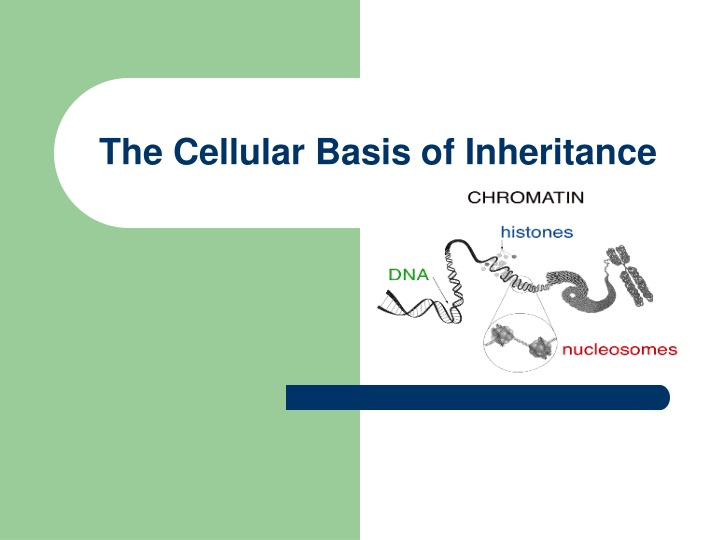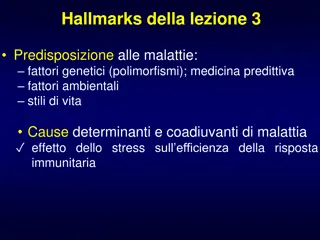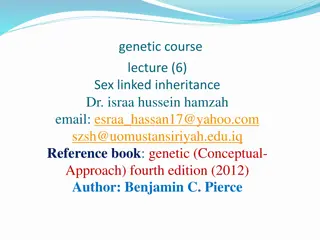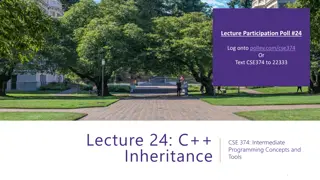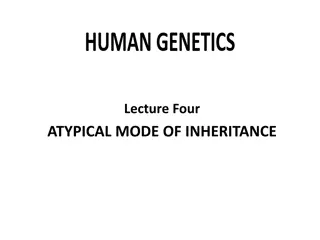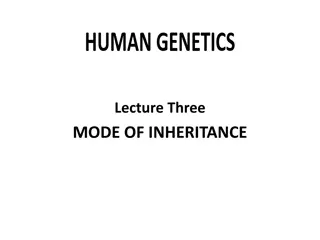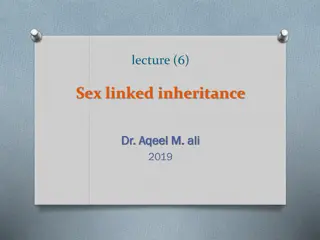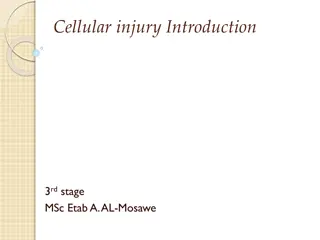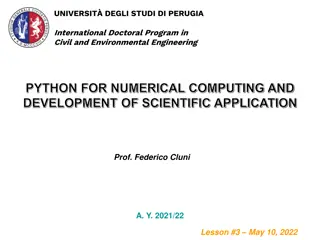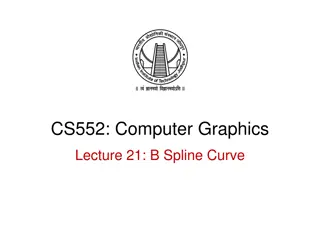The Cellular Basis of Inheritance
The content covers the significance of new cell formation, repair, growth, and reproduction processes. It emphasizes the role of chromosomes, chromatin, and cell division in maintaining genetic material and facilitating cell replication. With detailed explanations and visual aids, it explores the fundamental concepts underlying inheritance and cellular mechanisms essential for life.
Download Presentation

Please find below an Image/Link to download the presentation.
The content on the website is provided AS IS for your information and personal use only. It may not be sold, licensed, or shared on other websites without obtaining consent from the author.If you encounter any issues during the download, it is possible that the publisher has removed the file from their server.
You are allowed to download the files provided on this website for personal or commercial use, subject to the condition that they are used lawfully. All files are the property of their respective owners.
The content on the website is provided AS IS for your information and personal use only. It may not be sold, licensed, or shared on other websites without obtaining consent from the author.
E N D
Presentation Transcript
Why do we need new cells? Cells divide in order to: Repair damage To grow To produce offspring
Reproduction Asexual: process in which a single cell or set of cells produces offspring that inherit all their genetic material from one parent Sexual: process in which genetic material from two parents combines and produces offspring that differ genetically from either parent
Chromosomes and Cell Division Almost all the genes of a eukaryotic cell are located in the cell nucleus. Most of the time, this genetic material exists as a mass of very long fibers that are too thin to be seen under a light microscope.
Chromatin The long, thin fibers are called Chromatin Chromatin consists of DNA wound around proteins molecules called histones
Chromatin Next the DNA is wrapped into a tight helical formation When a cell prepares to divide these fibers condense and become visible under the microscope and are called CHROMOSOMES
Chromosomes When a cell is preparing to divide, chromatin condense into chromosomes The human somatic cell (body cell) has 46 chromosomes = diploid An egg and sperm cell only has 23 = haploid Each chromosome may contain thousands of genes
Chromosomes Before a cell divides, it replicates all of its chromosomes Each chromosome now consists of 2 identical joined copies called sister chromatids Each sister chromatid is joined by a centromere
Chromosome Called Sister Chromatids
Picture of all the Chromosomes in a human cell (Karyotype)
The Cell Cycle Describes the process of cell division Begins with interphase, followed by mitosis and cytokinesis
Cell Cycle and Mitosis The eukaryotic cell cycle is divided into two major phases: interphase and cell division.
A. Interphase Ninety percent or more of the cell cycle is spent in interphase. During interphase, cellular organelles double in number, the DNA replicates, and protein synthesis occurs. The chromosomes are not visible and the DNA appears as uncoiled chromatin
Interphase Interphase is divided into the following stages: G1 S G2
G1 phase During G1 phase, the cell grows and differentiates. New organelles are made but the chromosomes have not yet replicated.
S phase DNA synthesis occurs during S phase. The chromosomes replicate in preparation for cell division
G2 phase During G2 phase, molecules that will be required for cell replication are synthesized.
Cell Division Cell division consists of nuclear division and cytoplasmic division. Nuclear division is referred to as mitosis while cytoplasmic division is called cytokenesis
Interphase in a plant cell: Interphase in an animal cell
Mitosis (nuclear division) Mitosis is the nuclear division process in eukaryotic cells and ensures that each daughter cell receives the same number of chromosomes as the original parent cell. Mitosis can be divided into the following phases: prophase, metaphase, anaphase, and telophase.
Prophase During prophase, the chromatin condenses and the chromosomes become visible. Also the nucleolus disappears, the nuclear membrane fragments, and the spindle appartus forms and attaches to the centromeres of the chromosomes.
Prophase Prophase in a plant cell Prophase in an animal cell
Metaphase During metaphase, the nuclear membrane fragmention is complete and the duplicated chromosomes line up along the cell's equator.
Metaphase Metaphase in a plant cell Metaphase in an animal cell:
Anaphase During anaphase, diploid sets of daughter chromosomes separate and are pushed and pulled toward opposite poles of the cell. This is accomplished by the polymerization and depolymerization of the microtubules that help to form the spindle apparatus.
Anaphase Anaphase in a plant cell: Anaphase in an animal cell
Telophase During telophase, the nuclear membrane and nucleoli reform, cytokinesis is nearly complete, and the chromosomes eventually uncoil to chromatin. Usually cytokinesis occurs during telophase.
Telophase Telophase in a plant cell Telophase in an animal cell
Cytokinesis (cytoplasmic division) During cytokinesis, the dividing cell separates into two diploid daughter cells..
Cytokinesis (cytoplasmic division) In animal cells, which lack a cell wall and are surrounded only by a cytoplasmic membrane, microfilaments of actin and myosin attached to the membrane form constricting rings around the central portion of the dividing cell and eventually divide the cytoplasm into two daughter cells
Cytokinesis (cytoplasmic division) In the case of plant cells , which are surrounded by a cell wall in addition to the cytoplasmic membrane, carbohydrate-filled vesicles accumulate and fuse along the equator of the cell forming a cell plate that separates the cytoplasm into two daughter cells.
Cytokinesis in plants vs. animal cells In animal cells, cytokinesis begins in anaphase and continues until the cytoplasm has completely divided equally. Indentation is caused by the contraction of microfilaments just under the plasma membrane
In plant cells, a disk containing cell wall material called a cell plate forms inside the cell and grows outward Eventually the cell wall divides into 2
Mitosis 2 diploid cells are produced Somatic body cells Genetically identical cells produced
Cancer Caused by uncontrolled cell reproduction (mitosis) and severe disruption of the mechanisms that control mitosis These cells form a mass called a tumor Benign tumor: abnormal mass of normal cells
SCC2 Malignant tumor: abnormal mass of cancer cells Malignant tumor displaces the normal tissue as it grows If it is not removed, the cells can break off and spread to other areas of the body via blood or lymph The spread of cancer cells beyond their original site is called metastasis
Karyotype Typical human cell has 46 chromosomes A display of the all 46 chromosomes is called a karyotype Each person has 2 twin chromosomes called homologous chromosomes Where do you think each came from?
Homologous chromosomes Each homologous chromosome carries the same sequence of genes controlling a characteristic, but different versions Example: Eye color is located on the same place, but may be different versions (blue, brown, hazel) Different from sister chromatids because the material is genetically different
Humans have 23 homologous pairs of chromosomes The 23rd pair are called sex chromosomes All chromosomes look the same except for the sex csomes Males have XY Females have XX
Meiosis Sexual reproduction that involves formation of sex cells (Chromosome 23) 4 haploid cells are produced Sex cells (gametes) All 4 cells genetically different
